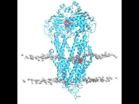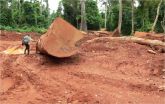Artificial 'plants' could fuel the future
By combining semiconducting nanowires and bacteria, researchers can now produce liquid fuel. Three pioneers in the field of synthetic photosynthesis discuss the potential of this technology and the challenges that must be overcome to make it commonplace.
2015-09-08
(Press-News.org) Imagine creating artificial plants that make gasoline and natural gas using only sunlight. And imagine using those fuels to heat our homes or run our cars without adding any greenhouse gases to the atmosphere. By combining nanoscience and biology, researchers led by scientists at University of California, Berkeley, have taken a big step in that direction.
Peidong Yang, a professor of chemistry at Berkeley and co-director of the school's Kavli Energy NanoSciences Institute, leads a team that has created an artificial leaf that produces methane, the primary component of natural gas, using a combination of semiconducting nanowires and bacteria. The research, detailed in the online edition of Proceedings of the National Academy of Sciences in August, builds on a similar hybrid system, also recently devised by Yang and his colleagues, that yielded butanol, a component in gasoline, and a variety of biochemical building blocks.
The research is a major advance toward synthetic photosynthesis, a type of solar power based on the ability of plants to transform sunlight, carbon dioxide and water into sugars. Instead of sugars, however, synthetic photosynthesis seeks to produce liquid fuels that can be stored for months or years and distributed through existing energy infrastructure.
In a roundtable discussion on his recent breakthroughs and the future of synthetic photosynthesis, Yang said his hybrid inorganic/biological systems give researchers new tools to study photosynthesis -- and learn its secrets.
"We're good at generating electrons from light efficiently, but chemical synthesis always limited our systems in the past. One purpose of this experiment was to show we could integrate bacterial catalysts with semiconductor technology. This lets us understand and optimize a truly synthetic photosynthesis system," he told The Kavli Foundation.
The stakes are high.
"Burning fossil fuels is putting carbon dioxide into the atmosphere much faster than natural photosynthesis can take it out. A system that pulls every carbon that we burn out of the air and converts it into fuel is truly carbon neutral," added Thomas Moore, who also participated in the roundtable. Moore is a professor of chemistry and biochemistry at Arizona State University, where he previously headed the Center for Bioenergy & Photosynthesis.
Ultimately, researchers hope to create an entirely synthetic system that is more robust and efficient than its natural counterpart. To do that, they need model systems to study nature's best designs, especially the catalysts that convert water and carbon dioxide into sugars at room temperatures.
"This is not about mimicking nature directly or literally," said Ted Sargent, the vice-dean of research for the Faculty of Applied Science and Engineering at University of Toronto. He was the third participant in the roundtable.
"Instead, it is about learning nature's guidelines, its rules on how to make a compellingly efficient and selective catalyst, and then using these insights to create better-engineered solutions."
"Today, nature has us beat," Sargent added. "But this is also exciting, because nature proves it's possible."
INFORMATION:
Read the full conversation with Yang, Sargent and Moore on The Kavli Foundation website: http://www.kavlifoundation.org/science-spotlights/fueling-how-nanoscience-creating-new-type-solar-power
ELSE PRESS RELEASES FROM THIS DATE:
2015-09-08
As early humans increasingly left forests and utilized tools, they took an evolutionary step away from apes. But what this last common ancestor with apes looked like has remained unclear. A new study led by researchers at UC San Francisco shows that important clues lie in the shoulder.
Humans split from our closest African ape relatives in the genus Pan - including chimpanzees and bonobos - 6 to 7 million years ago. Yet certain human traits resemble the more distantly related orangutan or even monkeys. This combination of characteristics calls into question whether the ...
2015-09-08
New research shows that high levels of ozone, which are predicted to increase in the atmosphere in the future, can dampen the scents of flowers that attract bees and other pollinators.
High ozone concentrations in ambient air caused fast degradation of the scent emitted from Brassica nigra flowers, reducing the range over which flowers could be identified by pollinators. Behavioral tests conducted with the buff-tailed bumblebee confirmed that ozone concentrations commonly occurring near large urban areas can strongly inhibit pollinators' attraction to flowers.
?"The ...
2015-09-08
Drugs important in the battle against cancer responded the way they do in real life and behaved according to predictions when tested in a computer-generated model of one of the cell's key molecular pumps -- the protein P-glycoprotein, or P-gp.
Biologists at Southern Methodist University, Dallas, developed the computer generated model to overcome the problem of relying on only static images for the structure of P-gp, said biologist John G. Wise, lead author on the journal article announcing the advancement.
The new SMU model allows researchers to dock nearly any drug ...
2015-09-08
Tropical forests are home to more of the world's terrestrial biodiversity than any other habitat, but are increasingly threatened by the impact of human activities. Illegal logging, in particular, poses a severe and increasing threat to tropical forests worldwide. But, until now, its impact on tropical wildlife has not been quantified.
A new study co-authored by scientists at Drexel University, published in the most recent issue of Biological Conservation, reveals the devastating impact of illegal logging on bird communities in the understory layer of Ghana's Upper Guinea ...
2015-09-08
Developing arthritis increases the risk of falling into poverty, especially for women, new research shows.
In a study of more than 4,000 Australian adults, females who developed arthritis were 51% more likely to fall into income poverty than nonarthritic women. In men, arthritis was linked with a 22% increased risk.
Also, women with arthritis were 87% more likely to fall into "multidimensional poverty," which includes income, health, and education attainment, while the arthritis-related risk in men was 29%. The investigators noted that given the high prevalence of ...
2015-09-08
Inside the trillions of cells that make up the human body, things are rarely silent. Molecules are constantly being made, moved, and modified--and during these processes, mistakes are sometimes made. Strands of DNA, for instance, can break for any number of reasons, such as exposure to UV radiation, or mechanical stress on the chromosomes into which our genetic material is packaged.
To make sure cells stay alive and multiply properly, the body relies on a number of mechanisms to fix such damage. Although researchers have been studying DNA repair for decades, much remains ...
2015-09-08
DENVER, Colo. - The publication of the Eighth Edition of the Tumor, Node and Metastasis (TNM) Classification of Lung Cancer will provide physicians around the world access to new data to more precisely stage and treat cases of lung cancer. That data, collected by the International Association for the Study of Lung Cancer (IASLC) Staging and Prognostic Factors Committee and presented at the 16th World Conference on Lung Cancer (WCLC) in Denver on Tuesday, Sept. 8, 2015 at the Colorado Convention Center, will be published in 2016.
In 1998, IASLC established its Lung Cancer ...
2015-09-08
Many cancers include increased copies of the gene MET. But in which cases is MET driving the cancer and in which do these increased copies happen to "ride along" with other molecular abnormalities that are the true cause of the disease? The answer influences whether a tumor will respond to drugs that inhibit MET, like crizotinib. A University of Colorado Cancer Center study being presented today at the 16th World Conference on Lung Cancer in Denver, Colorado sheds light on the best method to determine the threshold at which MET amplification becomes clinically relevant.
"Generally, ...
2015-09-08
When the influenza vaccine is well matched to the prevailing strains of flu in a given season, patients in nursing homes are significantly less likely to be hospitalized or to die of pneumonia and other influenza related causes. The finding comes from a study of more than 1 million Medicare fee-for-service long-stay nursing home residents.
When the vaccine's match with A/H3N2--the influenza strain typically responsible for severe symptoms--was excellent (75%) during an A/H3N2 predominant season, there was an estimated 2.0% reduction in deaths and a 4.2% reduction in ...
2015-09-08
DENVER, Colo. - If cancer patients are to receive optimal treatment, clinicians must have an accurate histologic classification of the tumor and know its genetic characteristics, said William D. Travis, M.D., attending thoracic pathologist, Department of Pathology, at Memorial Sloan Kettering Cancer Center in New York City. Dr. Travis made his remarks today at the 16th World Conference on Lung Cancer (WCLC) hosted by the International Association of the Study of Lung Cancer (IASLC).
Dr. Travis said the pathology and oncology professions made a big step towards this goal ...
LAST 30 PRESS RELEASES:
[Press-News.org] Artificial 'plants' could fuel the future
By combining semiconducting nanowires and bacteria, researchers can now produce liquid fuel. Three pioneers in the field of synthetic photosynthesis discuss the potential of this technology and the challenges that must be overcome to make it commonplace.

